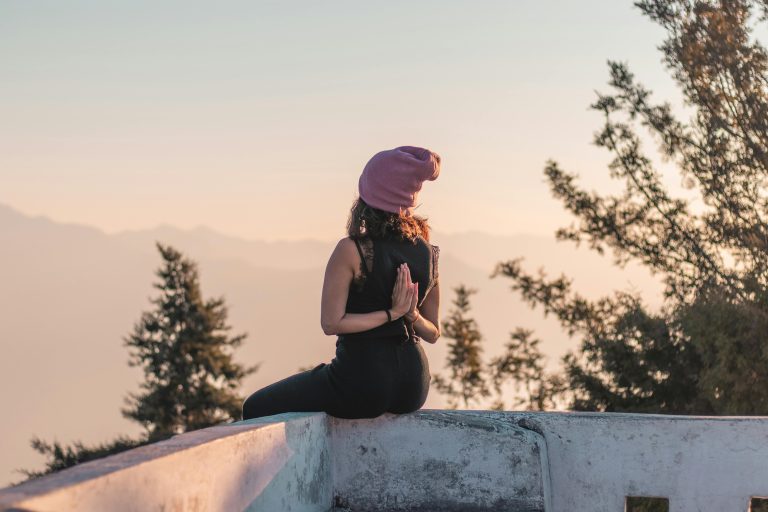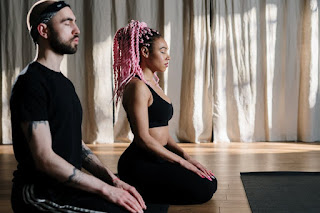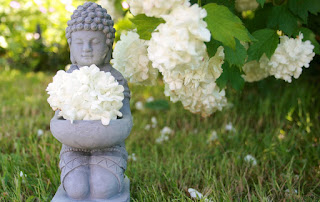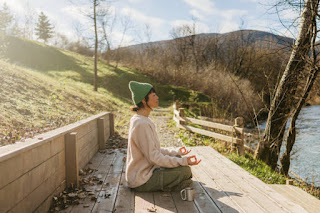Yoga as a Tool for Emotional Resilience
Yoga as a Tool for Emotional Resilience: Practices to Thrive Through Life’s Challenges

Can yoga help you bounce back from life’s toughest moments? In a world filled with stress, anxiety, and uncertainty, emotional resilience—the ability to adapt and thrive despite challenges, is more vital than ever. The World Health Organization reports that one in eight people worldwide lives with a mental health disorder, often triggered by chronic stress or burnout. Yoga, a centuries-old practice blending movement, breath, and mindfulness, offers a powerful way to build emotional strength. This article explores how yoga fosters emotional resilience, backed by science, and shares a unique yoga flow, breathing exercises, mindfulness techniques, and journal prompts to help you navigate life’s ups and downs with confidence.
What Is Emotional Resilience and Why It Matters
Emotional resilience is the capacity to cope with stress, recover from setbacks, and maintain balance during adversity. From demanding jobs to strained relationships or personal loss, life’s challenges can feel overwhelming. Without resilience, chronic stress can lead to burnout, anxiety, or depression, impacting mental and physical health. Research shows burnout, a state of emotional and physical exhaustion, affects up to 35 percent of workers in high-stress fields like healthcare.
Yoga is a holistic tool for building resilience. Unlike quick fixes, it strengthens the mind-body connection, helping you manage emotions and stay grounded. By combining physical poses, breathing exercises, and mindfulness, yoga equips you to handle stress with clarity and calm. Whether you’re new to yoga or a seasoned practitioner, its benefits for emotional well-being are accessible to all.
The Science Behind Yoga and Emotional Resilience
How does yoga transform your ability to handle stress? Science provides clear answers. Yoga reduces cortisol, the body’s primary stress hormone, while activating the parasympathetic nervous system, which promotes relaxation. A 2020 study in the Journal of Psychiatric Practice found that regular yoga improved emotional regulation in adults with anxiety, helping them respond to stress with greater calm. Another study on school-based yoga programs showed adolescents who practiced yoga reported lower stress and better self-compassion, key resilience components.
Yoga also reshapes the brain. Harvard Medical School research indicates mindfulness-based practices like yoga increase hippocampal size, the brain region tied to memory and emotional stability. This helps you process challenges without spiraling into negative thoughts. By calming the amygdala, the brain’s fear center, yoga reduces reactivity, making it easier to stay composed. Simply put, yoga rewires your brain for resilience.
These benefits aren’t exclusive to experts. Beginners practicing 20 minutes of yoga a few times a week can see mood and stress improvements. Consistency, not perfection, is key. Integrating yoga into your routine builds a toolbox for emotional resilience that grows stronger over time.
How Yoga Differs from Other Stress Relief Methods
Unlike running or meditation alone, yoga combines movement, breath, and mindfulness. This triple approach targets body and mind, making it uniquely effective for resilience. While jogging reduces stress, it doesn’t always teach emotional regulation in the moment. Yoga’s focus on breath and awareness helps you stay present, fostering control that carries into daily life.
Yoga Practices for Building Emotional Resilience
Ready to start? Below are practices to boost emotional resilience, including a unique yoga flow, breathing exercises, mindfulness techniques, and journal prompts. These release emotional tension and build inner strength. All you need is a quiet space and an open mind.
Release and Resilience Flow: A Unique Yoga Sequence
This 15-minute “Release and Resilience Flow” helps you let go of emotional weight and cultivate strength. Each pose releases stored tension—physical or emotional—and fosters grounding and renewal. Practice slowly, syncing breath with movement, and notice how each pose invites release. Beginners should move gently and listen to their body.
Cat-Cow Pose (Marjaryasana-Bitilasana) –
1 minuteOn all fours, hands under shoulders, knees under hips. Inhale, arch your back, lifting chest and tailbone (Cow). Exhale, round spine, tucking chin (Cat). Flow for 8 breaths.Essence of Release: This loosens the spine, where anxiety or grief often lodge. Rhythmic breath and motion create a safe space to release pent-up feelings, encouraging emotional fluidity.
Thread the Needle (Parsva Balasana) –
1 minute per sideFrom all fours, slide right shoulder and ear to the ground, threading right arm under. Rest shoulder and head on the floor for 5 breaths. Switch sides.Essence of Release: This twist relieves tension in the upper back and chest, tied to sadness or fear. Resting the heart toward the earth feels nurturing, promoting self-compassion.
Low Lunge with Side Bend (Anjaneyasana Variation) –
1 minute per side Step right foot forward into a low lunge, left knee down. Place left hand on the floor or a block, reach right arm overhead, bending slightly left. Hold for 5 breaths, then switch.Essence of Release: Hip flexors, tightened by stress, hold anger or insecurity. Opening them releases this tension, while the side bend frees the ribcage, enhancing breath and emotional expansiveness.
Seated Forward Fold (Paschimottanasana) –
2 minutes Sit with legs extended, feet flexed. Inhale, lengthen spine; exhale, fold forward, reaching for feet or shins. Breathe for 10 breaths.Essence of Release: Folding inward quiets the nervous system, inviting introspection. It releases lower back tension, where stress accumulates, encouraging surrender.
Supine Twist (Supta Matsyendrasana) –
1 minute per side Lie on back, hug right knee to chest, guide it across to the left, keeping shoulders grounded. Extend right arm, gaze right. Hold for 5 breaths, switch.Essence of Release: Twists detoxify body and mind, releasing emotional stagnation. This soothes the spine and nervous system, shedding stress or resentment.
Savasana with Heart Opener –
3 minutes Lie on back, place a folded blanket under upper back to lift chest. Rest arms by sides, palms up. Breathe deeply for 15 breaths.Essence of Release: Opening the chest counters stress-induced hunching, inviting vulnerability and emotional freedom. Savasana integrates the flow, fostering renewal.
Why This Flow Works: Each pose targets areas where emotions manifest (hips, chest, spine), while breath promotes mindfulness. The sequence progresses from dynamic to restorative, mirroring release and resilience. Practice 2–3 times weekly for emotional lightness and strength.
Breathing Exercises for Stress Reduction
Breathwork (pranayama) impacts emotional regulation. Try these for calm.
Diaphragmatic Breathing
Sit or lie down. Place one hand on chest, one on belly. Inhale through nose for four counts, belly rising. Exhale for six counts. Repeat 5 minutes.Why it works: Slows heart rate, signaling safety, reducing anxiety.
Alternate Nostril Breathing (Nadi Shodhana)
Sit upright. Close right nostril, inhale left for four counts. Close left, exhale right for six. Inhale right, switch. Repeat 5–10 cycles.Why it works: Balances nervous system, promoting clarity.
Mindfulness Practices for Emotional Strength
Yoga trains the mind to stay present. These enhance resilience by helping you observe emotions without judgment.
Body Scan Meditation: Lie down, close eyes. Focus on each body part, toes to head, noticing sensations. Spend 5–10 minutes post-yoga. Why it works: Increases self-awareness, releasing emotional tension.
Gratitude Journaling: Post-Yoga, write three things you’re grateful for. Reflect on how practice felt. Why it works: Cultivates positive emotions, boosting resilience.
Journal Prompts to Deepen Your Emotional Exploration
Journaling complements yoga by uncovering and processing emotions. After the “Release and Resilience Flow,” spend 10 minutes responding to these prompts. Write freely to explore your inner world.
What emotions feel heaviest in my body right now, and where do I sense them? Connects physical sensations to emotions, deepening mind-body awareness.
What challenge am I facing, and how can I approach it with more self-compassion?Reframes difficulties, reducing self-criticism and building strength.
What does resilience mean to me, and how did today’s yoga practice bring me closer to it?Ties practice to personal resilience, reinforcing yoga’s impact.
What am I ready to release, and what strength can I invite in its place? Inspired by the flow, helps identify burdens and envision positive change.
How can I carry the calm from my yoga practice into a stressful moment this week?Bridges practice to daily life, encouraging proactive resilience.
These prompts surface emotions yoga uncovers, fostering clarity and a resilient mindset. Keep a notebook to track progress.
How to Start Your Yoga Journey
No fancy equipment needed. Try these tips:
Set a Routine:
Practice the “Release and Resilience Flow” for 15 minutes, three times a week. Use free online videos.
Create a Space:
Use a quiet corner with a mat or towel.
Be Patient:
Focus on feeling, not appearance
Combine Practices:
Pair flow with breathing, mindfulness, journaling.
Beginners can try classes or consult a teacher for alignment. You’ll build a resilience-supporting practice over time.
Embrace Yoga for a Resilient Life
Yoga is more than exercise—it’s a lifeline for emotional resilience. The “Release and Resilience Flow” releases tension, breathing exercises calm the mind, mindfulness fosters presence, and journaling deepens self-awareness. Together, they reduce stress, rewire your brain, and empower you to thrive. Science confirms yoga’s benefits, and stories like Sarah’s prove its impact. Start with a 15-minute flow this week, journal your reflections, and discover how yoga transforms your emotional well-being. Your journey to resilience begins now.
Try the “Release and Resilience Flow” and journal one prompt this week. Share your experience in the comments or explore resources at Yoga Journal. Take the first step today!






